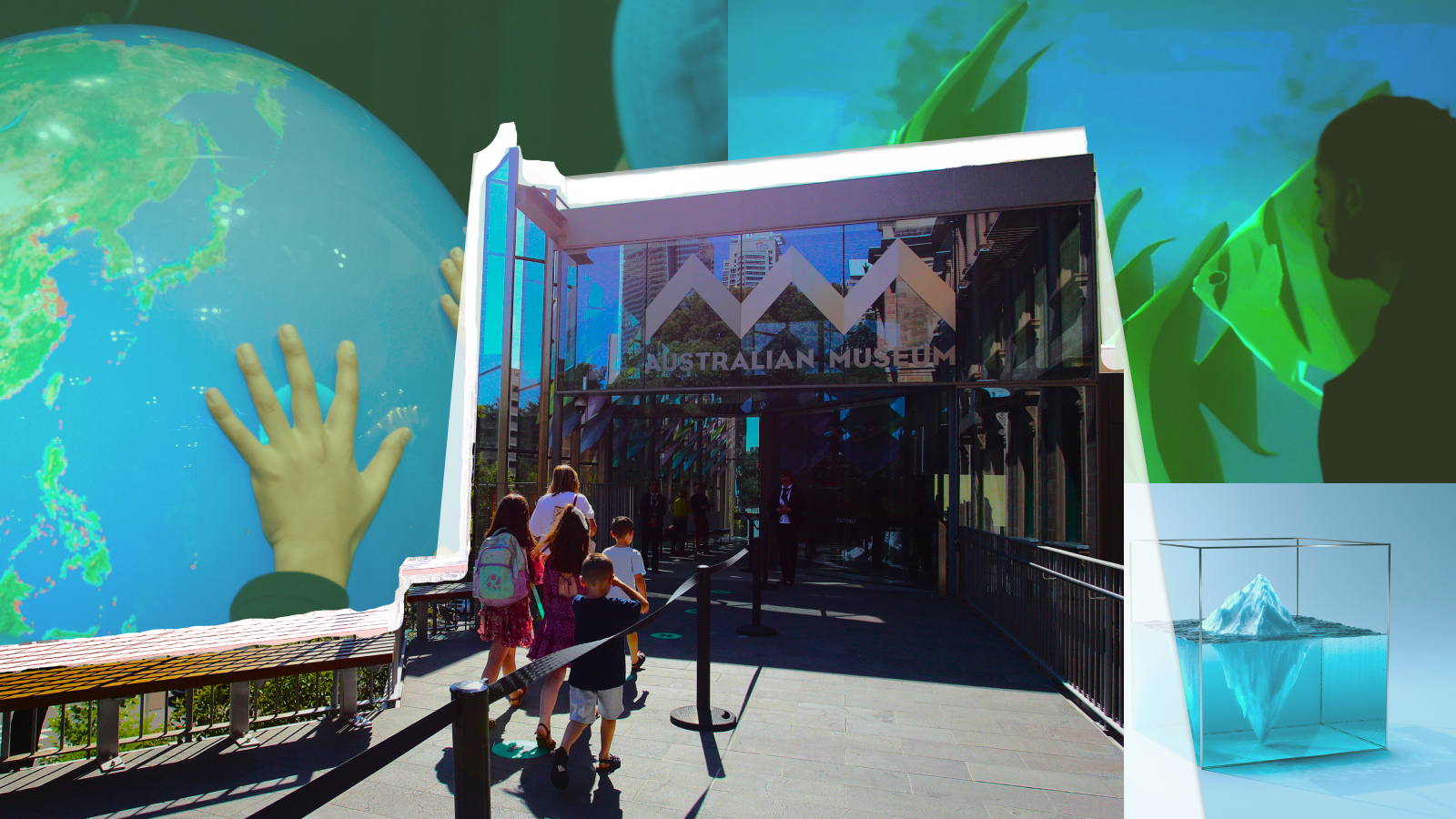Most cultural institutions, emerging from the pandemic, will thrive only if audiences return. Conversely, museums, galleries, and other arts venues have a role to play in helping cities as they reopen their economies. Given these realities — alongside a national resetting of priorities prompted by COVID and the push for environmental and racial justice — as well as the infrastructure funding the Biden administration hopes to make available, a growing chorus of voices say it is time for the arts to model a cleaner, greener, more equitable future.
The arts are in a unique position to do this through the design of their physical spaces and the works they exhibit, and given their altruistic goal of educating and informing. Some 850 million people visited a museum in the U.S. in 2019, and people find them more trustworthy than newspapers, nongovernmental organizations, and government agencies. That gives them wide latitude to shape public opinion. More than that, though, there is a mounting sense that this carbon-intensive sector has an obligation to clean up its act, literally and figuratively. The nation’s 35,000 or so museums tend to occupy old or sprawling buildings that aren’t terribly energy efficient, and many of them draw financial support from Big Oil and other polluting industries.
“You have no idea how unsustainable the art world is,” says Sommer Hixson, who became head of communications for eco-conscious retail real-estate owner Edens after a stint at New York cultural center The Shed. “But we are coming out of the pandemic with a ton more awareness about the fragility of our environment, and institutions are addressing it more explicitly.”
Hixson says museum visitors and patrons are increasingly focused on sustainability, and “it’s the same for developers right now.” That creates a sense of urgency for museums and other institutions to remake their curricula, model sustainable practices for their audiences, and showcase work focused on climate change. Their central role in the communities they serve also gives cultural institutions the ability to push cities to follow suit, says Rhiannon Jacobsen of the U.S. Green Building Council.
The council administers the Leadership in Energy and Environmental Design (LEED) certification program, which recognizes cities and structures that embrace building practices that promote energy and water efficiency and healthy environments. Buildings like Denver’s Museum of Contemporary Art or The Field Museum in Chicago can subtly but definitively shape people’s perception of sustainability simply by showing them what it looks like and how it can be implemented. That has a far stronger impact than lecturing to them. “People are going to enjoy an experience, and people often learn or are more excited about learning when they’re doing something that is voluntary,” Jacobsen says. “These institutions have this massive opportunity to really impact people.”
Now is the time for these institutions — many of which hold sizable endowments and enjoy the support of wealthy patrons — to acknowledge how energy-intensive they are and pursue greener building standards, says Joyce S. Lee, chair of the American Alliance of Museums’ Environment and Climate Network. “Museums can be more energy-intensive than skyscrapers or hospitals,” she says. That may sound surprising, but many of them, like the sprawling Smithsonian Institution, are campuses or complexes that combine modern structures with buildings that may be decades, or even centuries, old.
That said, “museums can also be very, very efficient,” Lee says, offering the $57.5 million renovation of the Australian Museum in Sydney as an example. The institution, citing “a responsibility to educate, research, inspire, and act on environmental sustainability,” decreased energy use 25 percent by updating its cooling system, replacing nearly 2,000 fluorescent lights with LED bulbs, and taking other steps to boost efficiency and reduce waste. Sustainability even played into the reconstruction itself as crews kept 90 percent of the demolition and construction waste out of landfills by recycling and repurposing it.
All this bodes well for the sustainable design of new buildings (or remodeling of existing ones) that showcase arts and culture. The San Francisco Museum of Modern Art, which completed a $305 million expansion in 2016 that tripled its exhibition space, cut its energy costs by 15 percent and its water use by 30 percent. The savings are the result of, among other things, a sophisticated energy-management system and LED lighting (with curved ceilings designed to maximize illumination while minimizing power usage). The building, which hews closely to California’s first-in-the-nation green-building standards and San Francisco’s Green Building Ordinance, achieved LEED gold certification, the second-highest level.
New York City has its own laws dictating green-building standards for city-funded capital projects and requires projects receiving municipal funding to consume significantly less energy than similar existing building types. Lee was the chief architect for the New York City Office of Management and Budget under Mayor Mike Bloomberg, overseeing a survey of city-owned buildings to help identify green design and development opportunities. “Everybody was tearing their hair out when this energy-benchmarking law was put in place, because nobody had done it before and it was very difficult the first few years,” Lee says. “But now, just like in Europe, it’s become the standard.”
And what of older, energy-intensive building stock? “A lot of cities are now targeting existing buildings, with incentives like New York’s carbon tax,” says Jacobsen. “There are a wide range of mandates and incentives to drive people to think about LEED, such as faster permits and tax breaks.”
The Toledo Museum of Art in Toledo, Ohio, is an example of a cultural institution using modern technology to improve the efficiency of what is, in its case, a 109-year-old building. The museum has, over the past 20 years, reduced its energy consumption by 79 percent. An array of more than 2,000 solar panels provides as much as 50 percent of the building’s power, and six natural gas-powered microturbines — each the size of a refrigerator — provide another 15 percent. The museum also uses LED lights that consume as little as three watts apiece.
Improving energy sustainability was also a key focus of New York’s CreateNYC Cultural Plan, which led to major capital investments and the hiring of the Department of Cultural Affairs’ first director of energy and sustainability, says Ryan Max, the agency’s director of external affairs. The agency has, since 2019, invested $22.5 million to underwrite 102 projects aimed at improving the energy efficiency of cultural institutions on city-owned property. The projects include, among other things, capital improvements, staff training, and the development of energy and sustainability exhibits, Max says.
That speaks to the other side of the equation: Beyond greening their spaces, museums can green their exhibitions. Organizations like London’s Tate Gallery and the Houston Museum of Natural Science have faced increased calls to divest from Big Oil from activists like 2020 Grist 50 honoree Beka Economopoulos and the arts collective Not An Alternative. Art might feed the mind and nourish the soul, but transporting it and displaying it often requires no small expenditure of greenhouse gasses.
[Read: Look inside a pop-up exhibit trying to push Big Oil out of museums]
Emma Enderby, chief curator of The Shed, agrees that exhibitions often have a problematic carbon footprint but sees ways to mitigate the impact — both by changing how art is exhibited and rethinking what’s shown in the first place. “I think there are ways of producing shows to reduce the footprint, and you can also create impact and change by working with artists who are also thinking about these ideas.”
An increasing number of artists are drawing attention to this with work that highlights and critiques how humans inhabit the world, such as Tomás Saraceno’s floating sculptures and Agnes Denes’ eco artworks. Museums can do more to highlight climate change and environmental injustice by celebrating artwork that explores these issues. But they also must avoid excluding the people living in the frontline communities bearing the brunt of these related crises.
2020 Grist 50 honoree Layel Camargo, the ecological arts and cultural manager at the The Center for Cultural Power, worked in a LEED-certified building in Oakland, California. Although they found the experience thrilling as “a champion of renewable energy,” the cost of achieving sustainability often is passed on to tenants, which can hasten gentrification — and deny economic opportunities to people of color who Camargo says are too often overlooked when cultural institutions hand out construction and renovation contracts.
Fifteen years ago, few museums were concerned with issues involving sustainability, yet hundreds of them have since registered for LEED certification. It’s a sign that museums are “awakening” to issues around diversity, equity, inclusion, and sustainability, Lee says.
“Climate justice is joined at the hip with DEI, and I think that is something not all museums, at least in this country, recognize yet,” adds Lee. Museums just need to make it a priority, and see how they can play an active role through their operations, governance, and education. “It’s not that hard,” she says. “You just need to focus on it.”




